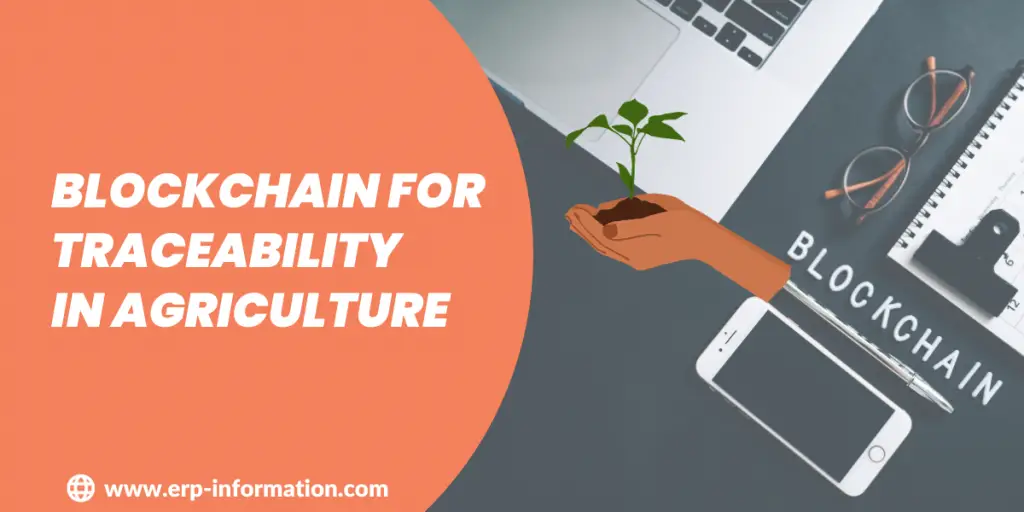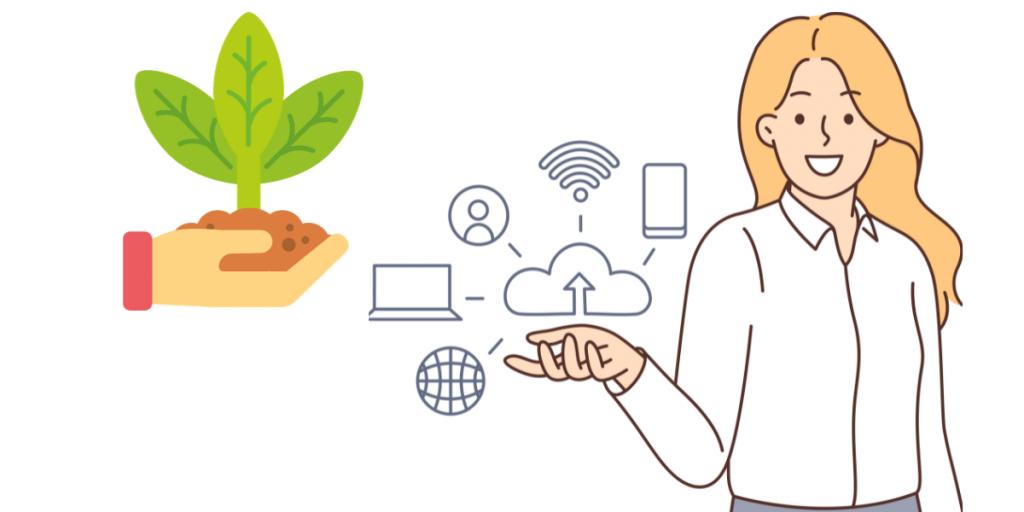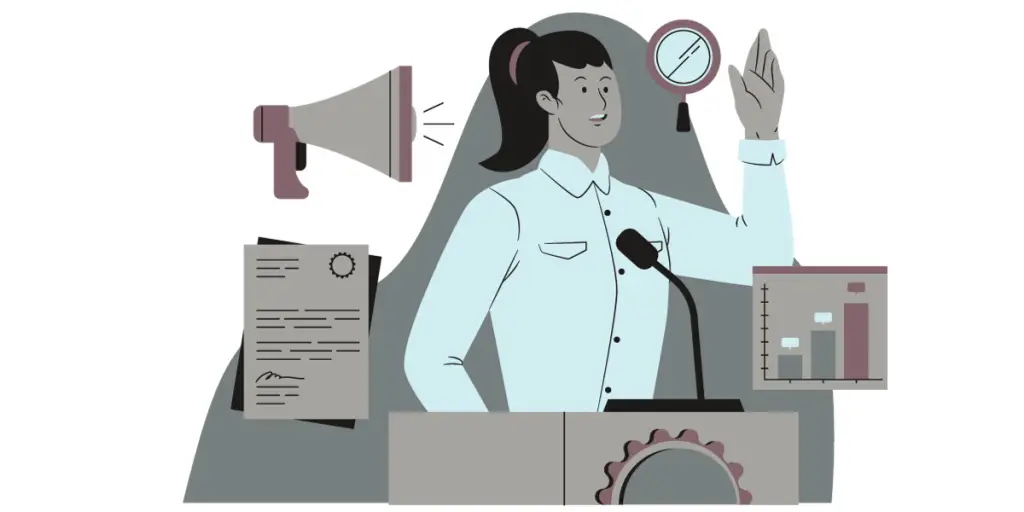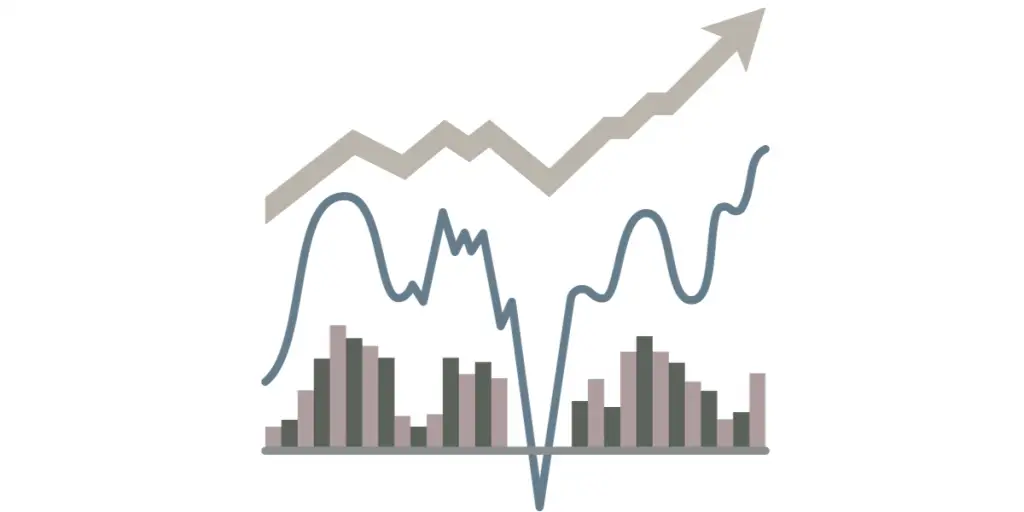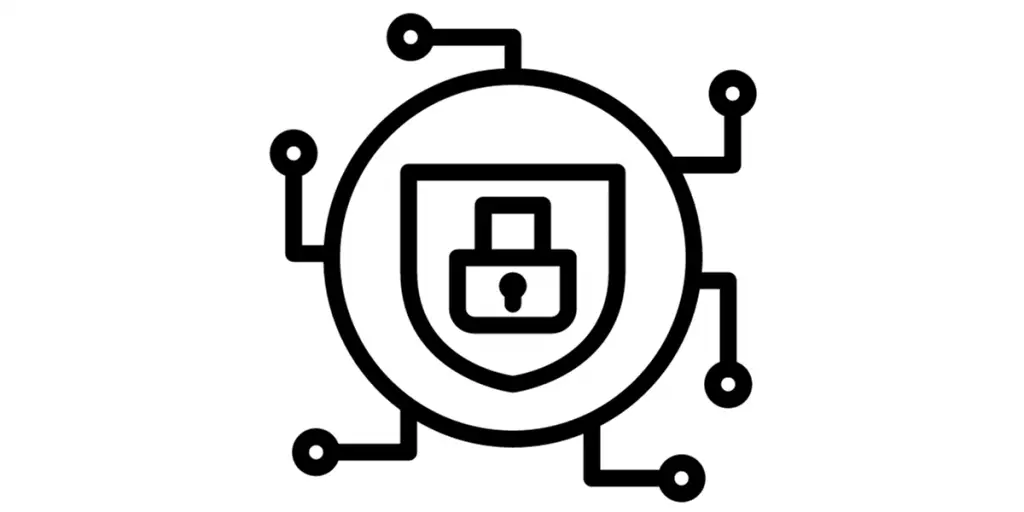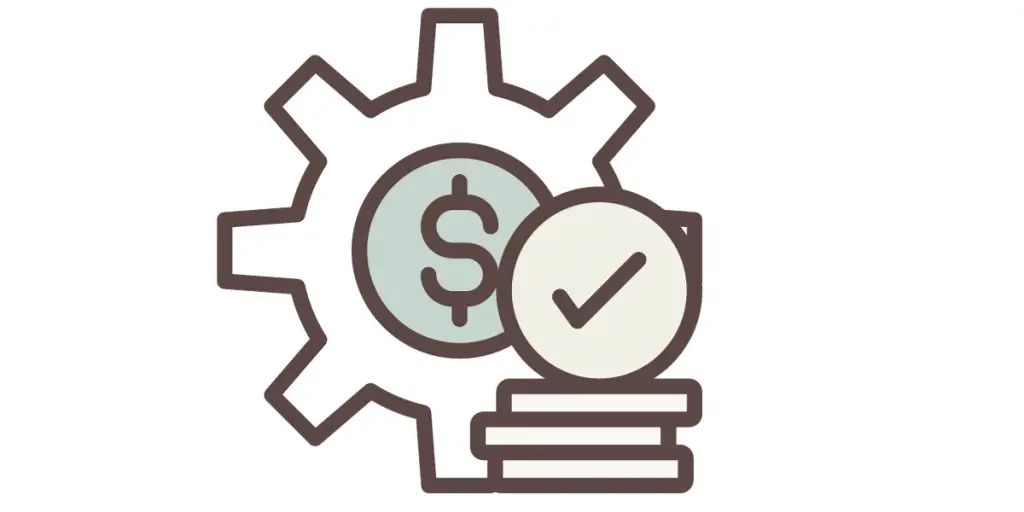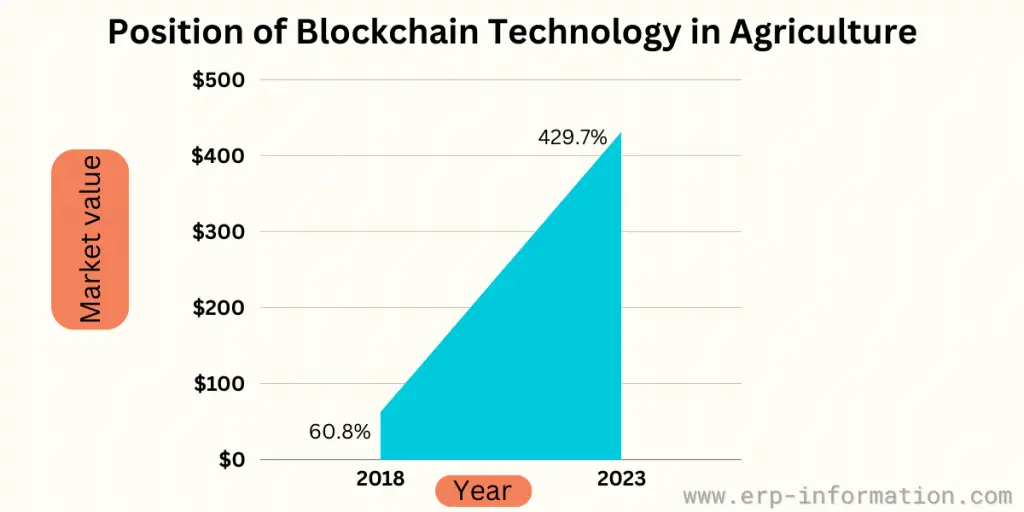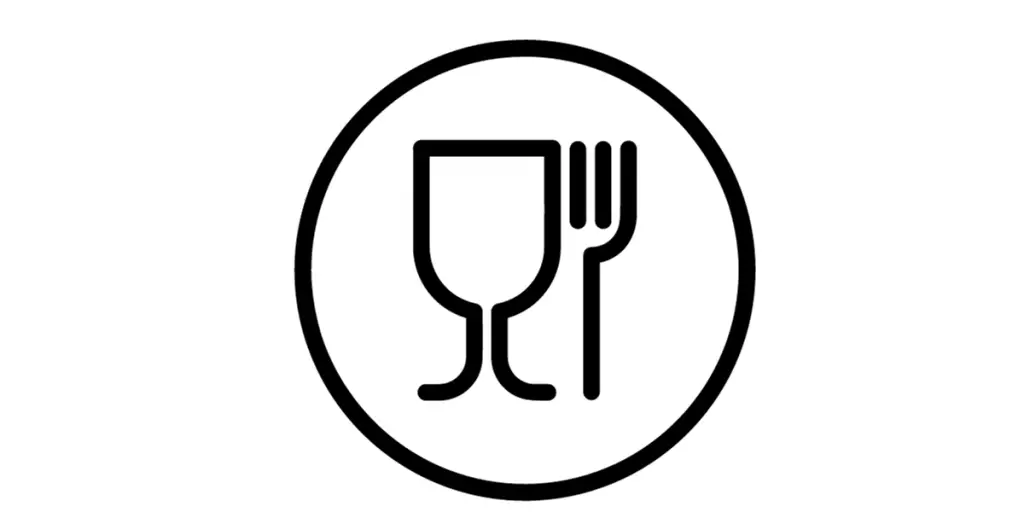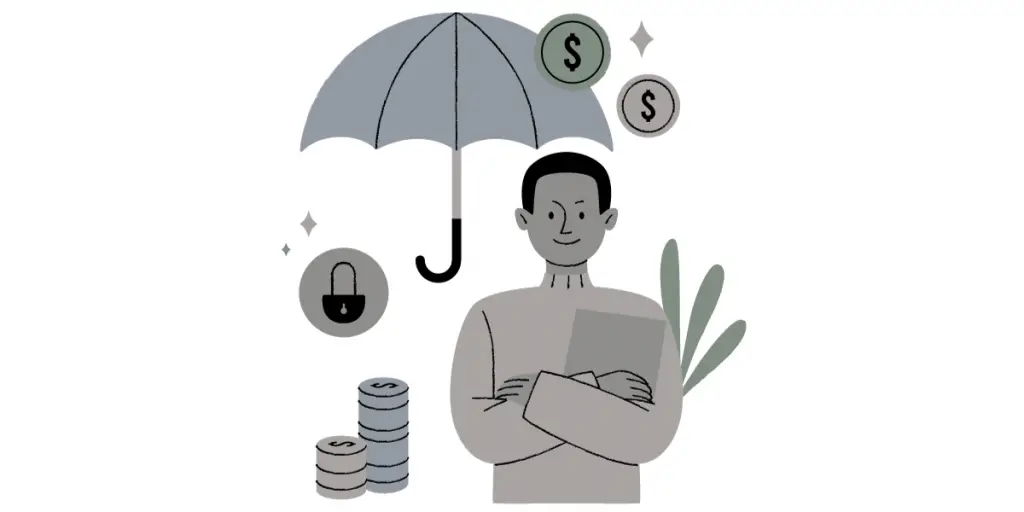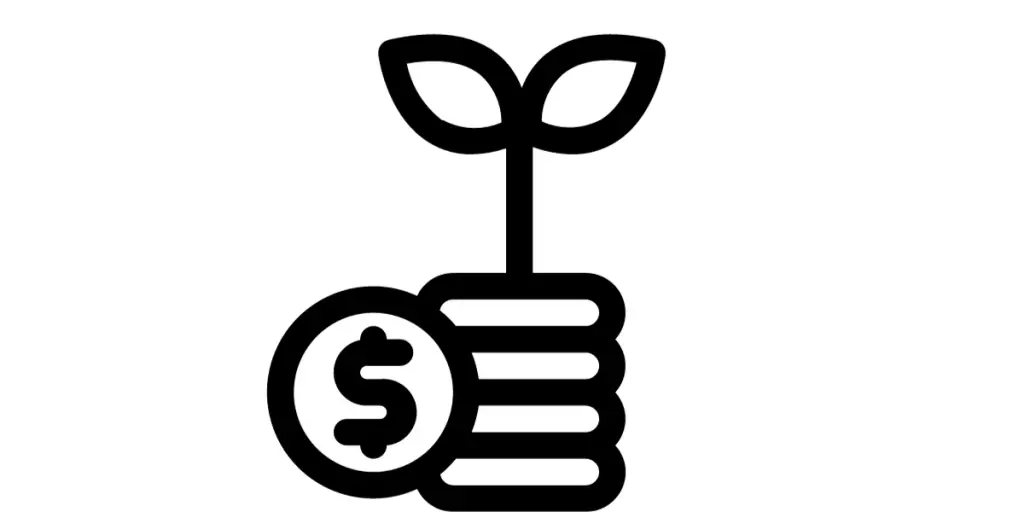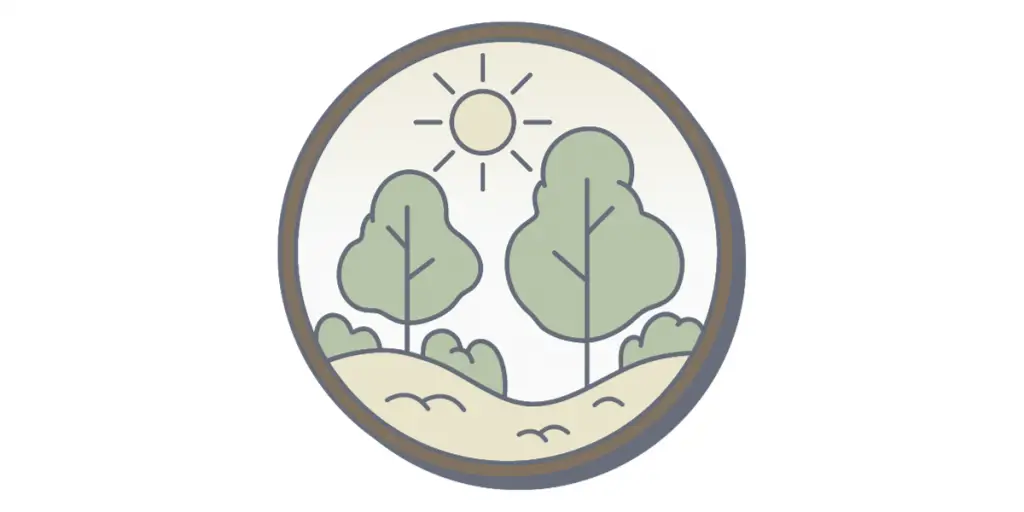In the world of farming, where our food grows, a new kind of technology is emerging. It’s not just about the fields; it’s about keeping track of where our food comes from and making it easy to see.
This new tech, called blockchain, is usually linked with money online, but it’s starting to change how we follow the journey of our food from the farm to our plates. So let us learn about blockchain for traceability in agriculture.
It’s like a storybook that records every step of a carrot, grain, or any food, so we know exactly where it’s been. It’s a new way to connect farming with technology, making our food clearer and easier to trust.
The article will discuss the role of blockchain technology for traceability in the agriculture industry. The article also talks about the benefits, challenges, and use cases of blockchain in agriculture and how it assists farmers.
What is blockchain technology in agriculture?
In the world of agriculture and food, there are many steps and many different people involved. From the small farmers who grow our food to the companies that sell it, there are so many stages in between. But sometimes, it’s hard to know exactly where our food comes from or how it was made.
This lack of information can hide big problems like unfair treatment of farmers, damage to the environment, and other issues that affect people and the planet.
Blockchain for food traceability steps in to help with this. It’s like a high-tech detective that can trace every step of our food’s journey, from the farm to our plates. It helps stop any bad stuff from sneaking in and making our food unsafe.
If something goes wrong, like if there’s a problem with a product, blockchain tracks it back to where it started.
How does it do this? It keeps records in a way that can’t be changed and doesn’t belong to just one person or company. This means the information about our food stays reliable and transparent.
Even consumers can get all this information. With all this knowledge, they can pick food that’s made by farmers and producers doing things in a really good way.
By using blockchain, we can work towards making sure our food meets certain goals that help the environment and society. This includes making the system fair for everyone involved, especially the small farmers who often face the most challenges.
The goal is to create a system that doesn’t leave anyone behind and makes the whole process of growing and getting our food more sustainable and fair for everyone.
Benefits of blockchain for traceability in agriculture
Blockchain brings a bouquet of benefits to agriculture that blossoms throughout the supply chain:
Transparency
By recording every step of a product’s journey, blockchain ensures a crystal-clear view of where our food comes from, promoting trust and informed choices for consumers. This transparency breaks down the walls of secrecy often present in traditional supply chains.
Analytics
The data stored in the blockchain provides a goldmine for analysis. It offers insights into trends, farming practices, consumer preferences, and even environmental impacts. This helps farmers and businesses make smarter decisions, optimizing resources and strategies.
Security
One of the biggest perks of blockchain is its robust security. The immutable and decentralized nature of blockchain ensures that the data recorded remains tamper-proof. This not only secures sensitive information but also guards against fraud and unauthorized changes in the system.
Streamlined operations
Blockchain integration simplifies the complexities within the agricultural system. With the ability to automate various processes, such as payments, contracts, and logistics, it streamlines operations, reducing paperwork and speeding up transactions.
Customer engagement
The openness facilitated by blockchain invites consumers into the fold of agriculture. It allows them to engage with the process, encouraging support for ethical and sustainable practices. This involvement creates a more connected and empowered consumer base.
How does blockchain technology help the agriculture industry with traceability?
Agricultural goods are known for their freshness, health benefits, and nutrients. However, because of strict storage and transportation needs, safety incidents in agriculture occur more often, posing risks to people’s health and trust in the industry.
To address this, many countries are focusing on traceability in the agricultural supply chain. Laws like China’s Food Safety Law in 2009 and the European Union’s General Food Law in 2002 require better tracking of production and quick recall capabilities, aiming to ensure safer food and regain consumer trust.
Traceability is a key part of the agricultural supply chain, involving tracing every step in a product’s journey.
Traditional agricultural traceability systems use centralized systems that may lead to less reliable traceability outcomes, potential data leaks compromising enterprise privacy, and the creation of isolated pockets of information, limiting their effectiveness and accessibility.
Ensuring trustworthy traceability is vital in solving the trust issues stemming from centralized agricultural supply chains. Academics and professionals are increasingly focused on achieving this and have come up with blockchain technology. It secures data integrity, prevents tampering, and avoids single-point failures.
Blockchain, originally linked with cryptocurrencies like Bitcoin, has gathered attention for its decentralized, tamper-resistant nature. It forms an unalterable chain of data blocks using cryptographic methods.
Through decentralized data storage and encryption, it guarantees secure traceability data storage and confirms the credibility of information sources, ensuring that the traceability of agricultural products is reliable and trustworthy.
It helps in the following ways.
Tracks Every Steps
Blockchain records each part of a plant’s or animal’s journey. It’s like knowing the entire story of your food—where it started, how it grew, and where it went after leaving the farm.
Finds Problems
If there’s something wrong, like contamination, blockchain acts like a super detective, tracing it back to where it began. This helps fix issues quickly, making our food safer.
Provides Reliable Information
Blockchain gives loads of information about the food that we use or buy. With this, we can make smart choices and support farmers who do things right. It’s like encouraging them for good farming practices.
Blockchain isn’t just about data; it’s like a clear window into the world of agriculture, making sure our food is safe and the people growing it are doing things the best way.
Position of blockchain technology in agriculture
As per the USA, Counterfeit food costs the global economy nearly $40 billion every year. In 2018, the agriculture supply chain held a market value of $60.8 million. It’s projected to surge to $429.7 million by 2023, with an anticipated annual growth rate of 47.8% during the forecast period, as per data from Markets and Markets.
How does blockchain help farmers?
It keeps a detailed record of every step in the food journey, ensuring that everything is transparent and safe. It eliminates unwanted operations, enhances quality control, and tracks storage conditions by gathering and storing every step of the supply chain for products.
If there’s a problem, like contamination, blockchain quickly finds the root and helps fix it.
By storing all kinds of info securely, blockchain helps with insurance along with distributed ledger technology.
It can validate claims faster and more accurately without human interference, making the whole insurance process smoother and transparent for farmers.
With blockchain, financial stuff becomes easier. Blockchain helps to keep agricultural financial transactions, financial agreements, and credit histories transparent.
It can streamline payments and transactions, making everything more secure and efficient for farmers and everyone involved.
The agricultural sector faces a unique challenge due to the influence of climate change and unpredictable weather, impacting it more significantly than many other industries.
Apart from that, ensuring responsible practices for the planet’s future is also a crucial thing for the agriculture business. This transparency is essential for demonstrating to investors their commitment to environmentally conscious farming techniques and maintaining the viability of their operations.
Blockchain acts as a guardian of the environment. It tracks how things are grown and transported, helping to promote sustainable practices. This means farmers can make choices that are good for nature and for the long-term health of their land.
Use cases
1. IBM and Walmart’s Global Collaboration (Food Trust Program)
Application
Walmart piloted blockchain technology within its food supply chain to enhance food safety and traceability.
Use Case
In collaboration with IBM, Walmart’s Food Trust Program tracked mangoes from farm to store. Before using blockchain technology it took more time, around 6 to 7 days to trace the origin of sliced mangos.
After the implementation of blockchain technology, Walmart traced mangos in US stores within 2.2 seconds. It provided details about the farm, date of harvest, processing, and more.
2. Nestlé’s Dairy Supply Chain Use of Blockchain (Middle East)
Application
Nestlé, a major global food and beverage company, adopted blockchain technology in its dairy supply chain in the Middle East.
Use Case
By utilizing blockchain, Nestlé traced milk from New Zealand farms to its factories in the Middle East. It has used blockchain technology since 2017, with IBM Food Trust prominently.
That helped the company to improve traceability, enabling consumers to access detailed information about the dairy products they purchase. This transparency built consumer trust and ensured product authenticity.
3. AgriDigital – Grain Supply Chain Management (Australia)
Application
AgriDigital, an Australian company, implemented blockchain in grain supply chain management.
Use Case
Through blockchain, AgriDigital enabled farmers, buyers, and warehouse operators to manage grain transactions securely and efficiently. The technology allowed for transparent and reliable data sharing, streamlining the entire supply chain process.
4. TH-Food in Agriculture
Application
TE-Food uses blockchain for farm-to-table traceability and supply chain management.
Use Case
Operating in various countries, TE-Food has applied blockchain to track various agricultural products, including meats, vegetables, grains, dairy products, and fruits. The platform provides comprehensive data, ensuring trust and quality for consumers and stakeholders.
5. BeefChain – Livestock Traceability
Application
BeefChain utilizes blockchain for cattle traceability and authenticity in the beef supply chain.
Use Case
By recording and storing data related to each animal—such as breed, health history, and origin—BeefChain ensures transparency for consumers and aids in swiftly tracing the source in case of food safety concerns.
Challenges
Below are challenges or key considerations while implementing blockchain technology in agriculture.
- Integration Difficulties
- Cost
- Interoperability
- Resistance to change
- Training
- Encryption
- Private data channels
- Access permission
Integration Difficulties
Adopting blockchain requires integrating it into existing agricultural systems, which can be complex and time-consuming. Compatibility with legacy systems and redefining processes can pose significant hurdles.
Cost
The initial setup and integration costs for blockchain technology can be high. Small-scale farmers or organizations with limited resources may find this financial investment challenging.
Interoperability
Ensuring that different blockchain systems can communicate and share data seamlessly is a key challenge. Creating standardized protocols for information exchange across various platforms is essential for widespread adoption.
Resistance to Change
The agricultural sector might resist transitioning to new technologies due to entrenched traditional methods or hesitancy towards digital transformation. Overcoming this resistance and fostering acceptance is crucial.
Training
Educating farmers and stakeholders about blockchain technology is essential. Lack of awareness and understanding can lead to hesitancy and underutilization of the technology’s potential.
Infrastructure and Connectivity
In remote agricultural areas, limited internet connectivity or inadequate infrastructure might hinder the smooth implementation of blockchain. Reliable internet access is crucial for real-time data recording and sharing.
Apart from implementation, there will be security challenges also, that includes,
Encryption
While blockchain employs robust encryption methods to secure data, challenges arise in ensuring that this encryption is consistently strong across the network. Weak encryption practices or outdated cryptographic methods can pose vulnerabilities.
Private Data Channels
Maintaining private data channels within a blockchain network, especially in agriculture, is critical for safeguarding sensitive information. Challenges surface in ensuring that these private channels remain truly private and impervious to unauthorized access.
Access Permission
Assigning access permissions in blockchain networks is crucial for data security. Ensuring that only authorized individuals or entities have the right access to specific data can be challenging, especially when managing a diverse network of stakeholders.
Conclusion
Finally, we can conclude that Blockchain isn’t just a fancy tech word; it’s a game-changer in how we see and secure our food’s journey. It’s like a guardian, ensuring every step of your food’s path is crystal clear and trustworthy.
As we look to the future, this technology promises more than just safer food. It’s a step towards a world where honesty and trust in our food are the norm. In this article, we discussed the role of blockchain technology for traceability in the agriculture industry. Hope you understand the concept.
